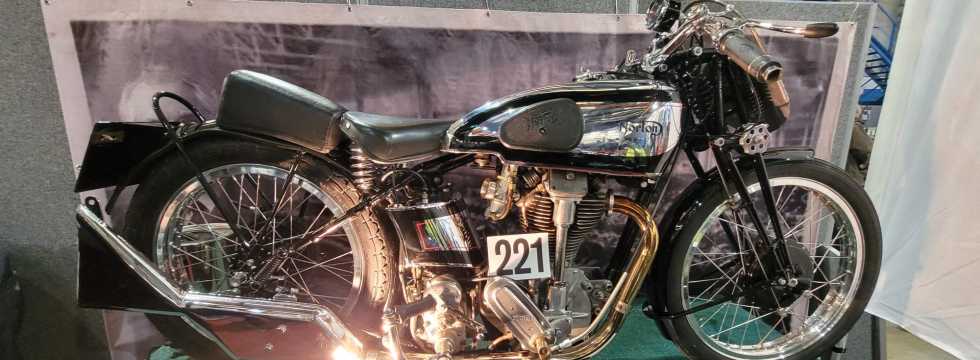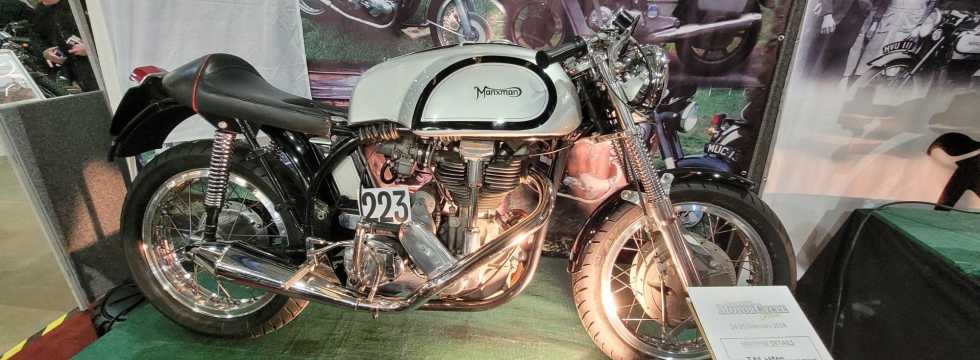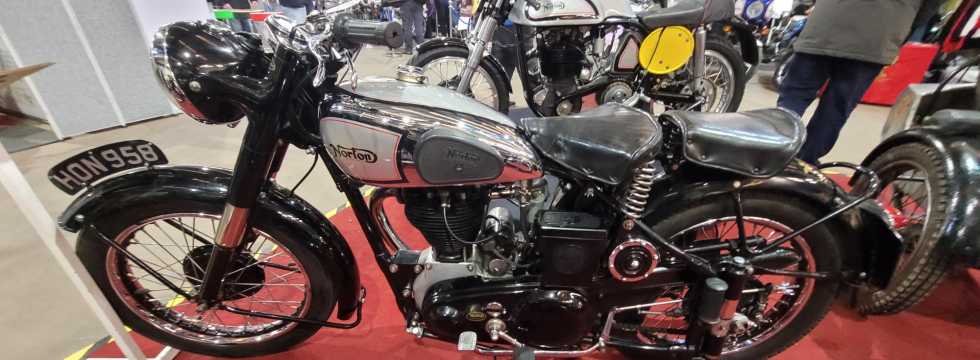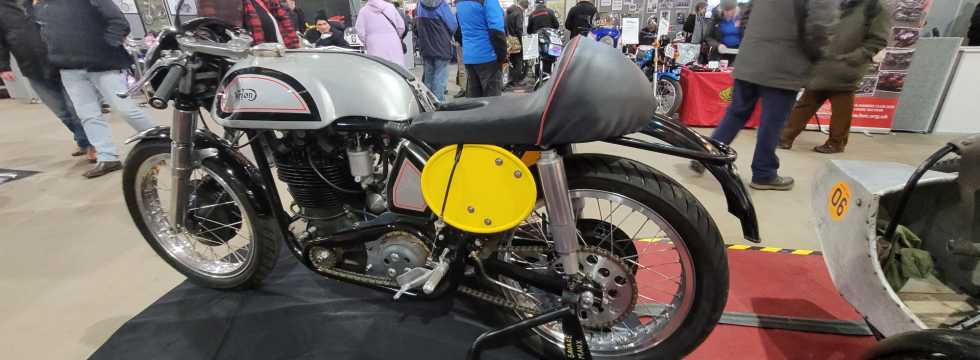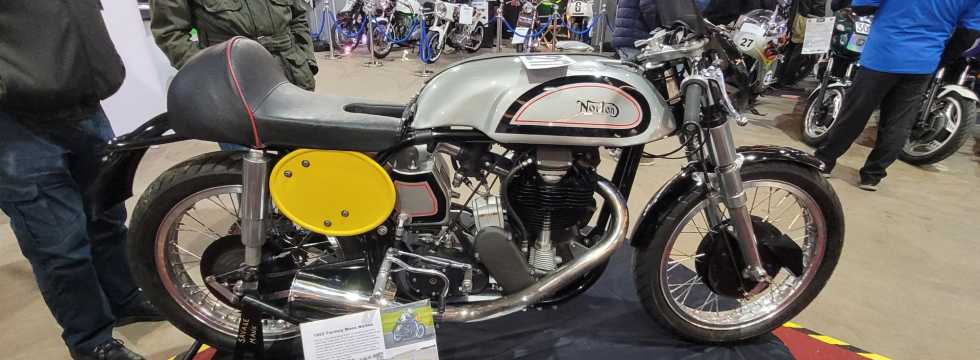A review of correspondence from NOC-L
Following rebuilds, it is important to ensure that the oil system is fully primed
|
"After one year of work I have finished the restoration of my Commando. I rebuilt my engine and started it but after about two minutes there was still no oil returning to the tank, so I stopped the motor. I repeated the procedure several times but still no oil returned to the tank." |
Has the filter completely filled with oil?
If you have a new oil filter on the bike, it may just be that the filter hasn't completely filled with oil yet, and that's why you don't see any returning to the tank. It's easy to check; just unscrew the filter and see if there's any oil in it. If you have oil flow at the rocker spindles, then the pump has already primed itself and is pumping oil. Check the oil level in the sump by removing the plug in the bottom of the case and see how much drains out. If it's a lot, then something may be blocking the pickup passageway to the scavenge side of the pump.
Ken Dubey (kdubey@exchange1.pria.com) on NOC-L 3rd. Nov 1998
Remove any air between the oil pump and oil tank
I had the same problem several years ago, but imagine that with the Mk.lll and its anti-drain valve in the timing cover, the problem is worse. The solution, I found, was to remove the pipe that feeds the rocker spindles from the banjo bolt on the timing cover and replace it with a small length of plastic tube, (something like a battery breather tube would be fine). Next, get hold of one of the old pump action oil guns (the one with a long tapered spout) and fill it with 20/50. Push the oil gun spout into the pipe as hard as you can, secure with a jubilee clip, although I've never found this necessary, and pump away.
I think (obvious disclaimer), that you are forcing oil backwards through the pump, through the anti-drain valve and back into the oil tank. If you have an anti-drain valve that really works (very few do), then you might have a problem. The objective of the exercise is to remove the air that lies between the pump and the tank.
Peter Aslan (paslan@uk.mdis.com) on NOC-L 3rd. Nov 1998
Refill the crankshaft sludge cavity on a rebuilt motor
Most important of all, you are filling the rather large sludge cavity in the crankshaft with oil, if it is completely rebuilt motor. I think this is most important because the rod bearings are running without oil pressure until the cavity is filled. I always use the method described by Peter Aslan to prime the oil system of a new motor and although it still seems to take forever for oil to start returning to the tank, it is nice knowing the rod big ends are having an easier first several minutes of their life. You will know when the crankshaft is full of oil because the oil can will then have a heavy resistance to being pumped.
Gary Slabaugh (gdslabaugh@sprintmail.com) on NOC-L 3rd. Nov 1998
Pre-prime the lubrication system
I always stand the lower end so the feed end of the crank is at the top and slowly feed oil in until the crank is full before putting the timing cover on. I also fill the pump with oil before mating it to the the case. A few kicks with the plugs out gets the rest of the oiling system full before actually starting the engine. There is much less potential for problems if the entire system is already primed.
Ken Dubey (kdubey@exchange1.pria.com) on NOC-L 4th. Nov 1998
Prime just the pump and the rest will look after itself
I'm afraid I don't understand all this concern about priming the entire oil circuit manually. I believe the workshop manuals are referring to priming the oil 'pump' itself prior to reinstalling it.....not pressurising the whole system. A few kicks without the ignition on will take care of everything else.
Les Scourse (scourse@adan.kingston.net) on NOC-L 5th. Nov 1998
Rebuilt engines will require more priming
Actually, quite a few kicks. As Gary Slabaugh wrote above, I'd rather fill the oiling system first so there is pressure and oil flow immediately on initial startup, rather than have the bearings banging against the rod journals for a couple hundred revs before the pump can fill the trap and start supplying the rod bearings. Of course I only worry about this if it's a complete rebuild, otherwise the sludge trap should still be mostly full of oil.
Ken Dubey (kdubey@exchange1.pria.com) on NOC-L 6th. Nov 1998
The crankshaft must be primed with oil
On my last rebuild, I thoroughly primed the oil pump pressure and scavenge side and poured about one pint down the rocker box area. After completing the timing cover and setting the timing, I realised that I had forgotten to prime the crankshaft.
Start up lubrication is critical, especially for sleeve and babbit bearings. What worked well for me in this instance was to remove the spark plugs, drop it in gear and push it around until I felt I had thoroughly paid for this sin of forgetfulness. While pushing the bike with the oil tank cap open, I observed the return. I continued pushing (you may want to get help with this) until I estimated the return had pumped more than the one pint or so that I dumped into the rocker box. This method provides the confirmation of the crankshaft and bearings being primed, and an excellent reminder and incentive not to forget the priming (ever) again in the future.
John Magyar (wimcjjm@aol.com) on NOC-L 9th. Nov 1998

